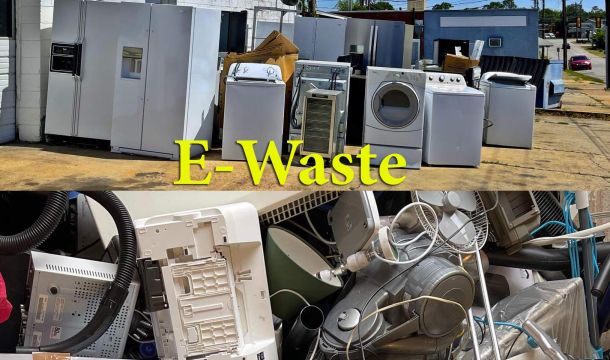المخاطر البيئية والصحية لتلوث البحار والأنهار بالأدوية والمشتقات الصيدلانية
الصفحة 7 من 7
References:
Ahmed KA. (2003 ). Environmental Protection, Public Health and Human Rights: An Integrated Assessment. Global Children’s Health and Environment Fund National Council for Science and the Environment. Washington, USA.
Al-Ahmad A, Daschner FD, and Kummerer K. (1999). Biodegradability of cefotiam, ciprofloxacin, meropenem, pinicillin G, and sulfamethoxazole and inhibition of wastewater bacteria. Arch. Environ. Cont. Toxicol. 37: 158-163.
Auger J, Kunstmann JM, Czglik F, and Jouannet P. (1995). Decline in semen quality among fertile man in paris during the past 20 years. New England Journal of Medicine. 332: 281-285.
Barber, L.B., Lee, K.E., Swackhamer, D.L., Schoenfuss, H.L., 2007, Reproductive responses of male fathead minnows exposed to wastewater treatment plant effluent, effluent treated with XAD8 resin, and an environmentally relevant mixture of alkylphenol compounds: Aquatic Toxicology, v. 82, no. 1, p. 36-46.
Boivin, M. (1997). The cost of medication waste. Canadian Pharmaceutical Journal / Revue
Boyd GR, Palmeri JM, Zhang S, and Grimm DA. (2004). Pharmaceuticals and personal care products (PPCPs) and endocrine disrupting chemicals (EDCs) in stormwater canals and Bayou St. John in New Orleans, Louisiana, USA. Sc. Total Environ. 15;333(1-3):137-48.
Boyd GR, Reemtsma H, Grimm DA and Mitra S.(2003). Pharmaceuticals and personal care products (PPCPs) in surface and treated waters of Louisiana, USA and Ontario, Canada. Sci. Total Environ. 20;311(1-3):135-49
Buser H-R, Müller MD, Theobald N. (1998). Occurrence of the pharmaceutical drug clofibric acid and the herbicide mecoprop in various Swiss lakes and in the North Sea. Environmental Science and Technology. 32:188-192.
Cargouet M, Perdiz D, Mouatassim-Souali A, Tamisier-Karolak S, and Levi Y. (2004). Assessment of river contamination by estrogenic compounds in Paris area (France). Sci. Total Environ. 25;324(1-3):55-66.
Carlsen E, Giwercman A, Keiding N and Skakebaek NE. (1992). Evidence for decreasing quality of semen during past 50 years. British Medical Journal. 305: 609- 613.
Chitnis V, Chitnis S, Vaidya K, Ravikant S, Patil S, and Chitnis DS. (2004). Bacterial population changes in hospital effluent treatment plant in central India. Water Res. 38(2):441-447.
Comoretto L. and Chiron S. (2005). Comparing pharmaceutical and pesticide loads into a small Mediterranean river. Science of the Total Environment. Volume 349, Issues 1-3, Pages 201-210.
Ferraz MC, Cardoso JI, and Pontes SL. (2000). Concentration of atmospheric pollutants in the gaseous emissions of medical waste incinerators. J Air Waste Manag Assoc. 50(1):131-136.
Furuichi T, Kannan K, Giesy JP, and Masunaga S. (2004). Contribution of known endocrine disrupting substances to the estrogenic activity in Tama River water samples from Japan using instrumental analysis and in vitro reporter gene assay. Water Res. 38(20):4491-501.
Gagné F, Blaise C and Andre C. (2006). Occurrence of pharmaceutical products in a municipal effluent and toxicity to rainbow trout (Oncorhynchus mykiss) hepatocytes. Ecotoxicology and Environmental Safety. Volume 64, Issue 3, Pages 329-336.
Gros M, Petrović M, Barceló D. (2007). Wastewater treatment plants as a pathway for aquatic contamination by pharmaceuticals in the ebro river basin (northeast Spain). Environ Toxicol Chem.;26(8):1553-62.
Guardabassi L, Petersen A, Olsen J, and Dalsgaard A. (1998). Antibiotic Resistance in Acinetobacter spp. Isolated from Sewers Receiving Waste Effluent from a Hospital and a Pharmaceutical Plant. Applied and Environmental Microbiology. 64(9): 3499–3502.
Haggard BE, Galloway JM, Green WR and Meyer MT. (2006). Pharmaceuticals and other organic chemicals in selected north-central and northwestern Arkansas streams. Journal of Environment Quality. 35 (4): 1078- 1087.
Hashimoto S, Horiuchi A, Yoshimoto T, Nakao M, Omura H, Kato Y, Tanaka H, Kannan K, and Giesy JP. (2005).Horizontal and vertical distribution of estrogenic activities in sediments and waters from Tokyo Bay, Japan. Arch Environ. Contam. Toxicol. 48(2):209-16.
Holm JV, Rügge K, Bjerg PL, Christensen TH. (1995). Occurrence and distribution of pharmaceutical organic compounds in the groundwater downgradient of a landfill (Grindsted, Denmark). Environmental Science and Technology. 29(5):1415-1420.
Kolpin DW, Furlong ET, Meyer MT, Thurman EM, Zaugg SD, Barber LB and Buxton HT. (2002). Pharmacuticals, Hormones, and other organic wastewater contaminats in U.S. Streams, 1999- 2000: A national reconnaissance. Environ. Sci. Technol. 36, 1202-1211.
Kummerer K, Al-Ahmad A, and Mersch- Sundermann V. (2000). Biodegradability of some antibiotics, elimination of their genotoxicity and affection of wastewater bacteria in a simple test. Chemosphere. 40: 701-710.
Kummerer K. (2001). Drugs in the environment: emission of drugs, diagnostic aids and disinfectants into wastewater by hospitals in relation to other sources–a review. Chemosphere. 45(6-7): 957-969.
Kuspis, D. A. and Krenzelok, E. P. (1996). What happens to expired medications? A survey of community medication disposal. Veterinary and human toxicology, 38(1), 48-49.
Leusch FD, Chapman HF, van den Heuvel MR, Tan BL, Gooneratne SR, and Tremblay LA. (2006). Bioassay-derived androgenic and estrogenic activity in municipal sewage in Australia and New Zealand. Ecotoxico. Environ Saf. 65(3):403-11.
medications. Journal of the American Board of Family Medicine, 19(6), 542-547.
Morgan, T. M. (2001). The economic impact of wasted prescription medication in an outpatient population of older adults. The Journal of Family Practice, 50(9), 779-781.
Nicole Kemper N (2008). Veterinary antibiotics in the aquatic and terrestrial environment. Ecological Indicators. Volume 8, Issue 1, Pages 1-13
Pharmaceutique Canadienne, 130(4) 32-39.
Pojana G, Bonfa A, Busetti F, Collarin A, and Marcomini A. (2004). Estrogenic potential of the Venice, Italy, lagoon waters. Environ Toxicol Chem. 23(8):1874-80
Prüss A, Giroult E, Rushbrook P, editors. (1999). Management of wastes from health care activities. World Health Organization. Geneva.
Seehusen, D. A. and Edwards, J. (2006). Patient practices and beliefs concerning disposal of
Skutlarek D, Exner M, and Farber H. (2006). Perfluorinated surfactants in surface and drinking waters. Environ Sci. Pollut. Res. Int. 13(5):299-307
Spengler P, Korner W, and Metzger JW. (2001). Substances with estrogenic activity in effluents of sewage treatment plants in southwestern Germany. 1. Chemical analysis. Environ Toxico. Chem. 20(10):2133-41
Svenson A, Allard AS, and Ek M. (2003). Removal of estrogenicity in Swedish municipal sewage treatment plants. Water Res. 37(18):4433-43.
Svenson A, and Allard AS. (2004). Occurrence and some properties of the androgenic activity in municipal sewage effluents. J Environ Sci Health A Tox Hazard Subst Environ Eng. 39(3):693-701.
Symbiosis. (2007). Cow Manure: The Latest Weapon against Drug Contamination? The Journal of Ecologically Sustainable Medicine. Vol. 4 No. 2, Theteleosis Institute. WWW.TELEOSIS.ORG.
Thomas KV, Hilton MJ. (2004). The occurrence of selected human pharmaceutical compounds in UK estuaries. Mar Pollut. Bull.;49(5-6):436-44.
Turk M, Davas A, Ciceklioglu M, Sacaklioglu F, and Mercan T. (2004). Knowledge, attitude and safe behaviour of nurses handling cytotoxic anticancer drugs in Ege University Hospital. Asian Pac J Cancer Prev. 5(2):164-168.
Vermeirssen EL, Suter MJ, and Burkhardt-Holm P (2006). Estrogenicity patterns in the Swiss midland river Lutzelmurg in relation to treated domestic sewage effluent discharges and hydrology. Environ Toxicol Chem. 25(9):2413-22
Williams RJ, Johnson AC, Smith JJ, and Kanda R. (2003). Steroid estrogens profiles along river stretches arising from sewage treatment works discharges. Environ Sci Technol. 1;37(9):1744-50.
Zaharie Moldovan. (2006). Occurrences of pharmaceutical and personal care products as micropollutants in rivers from Romania. Chemosphere. Volume 64, Issue 11, Pages 1808-1817.
Zhang S, Zhang Q, Darisaw S, Ehie O, Wang G. (2007). Simultaneous quantification of polycyclic aromatic hydrocarbons (PAHs), polychlorinated biphenyls (PCBs), and pharmaceuticals and personal care products (PPCPs) in Mississippi river water, in New Orleans, Louisiana, USA. Chemosphere.;66(6):1057-69.





اترك تعليقاً